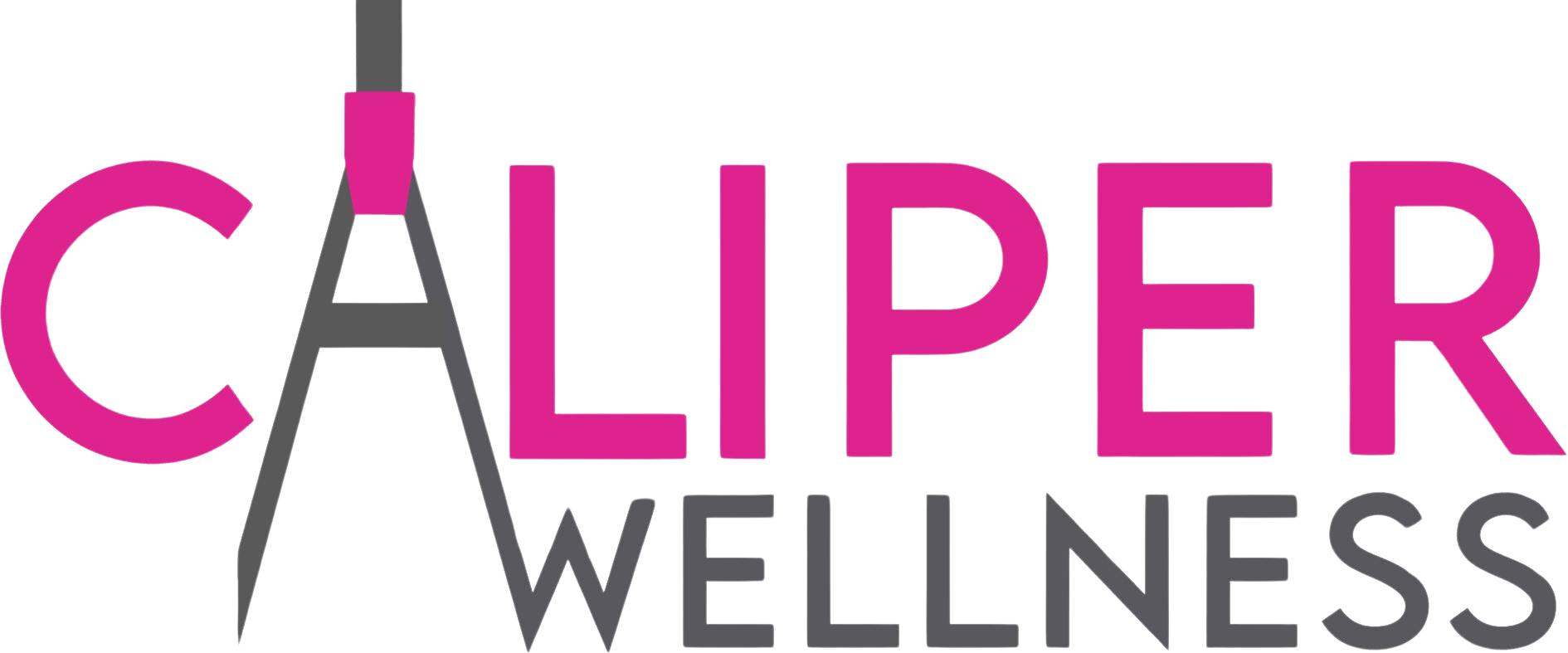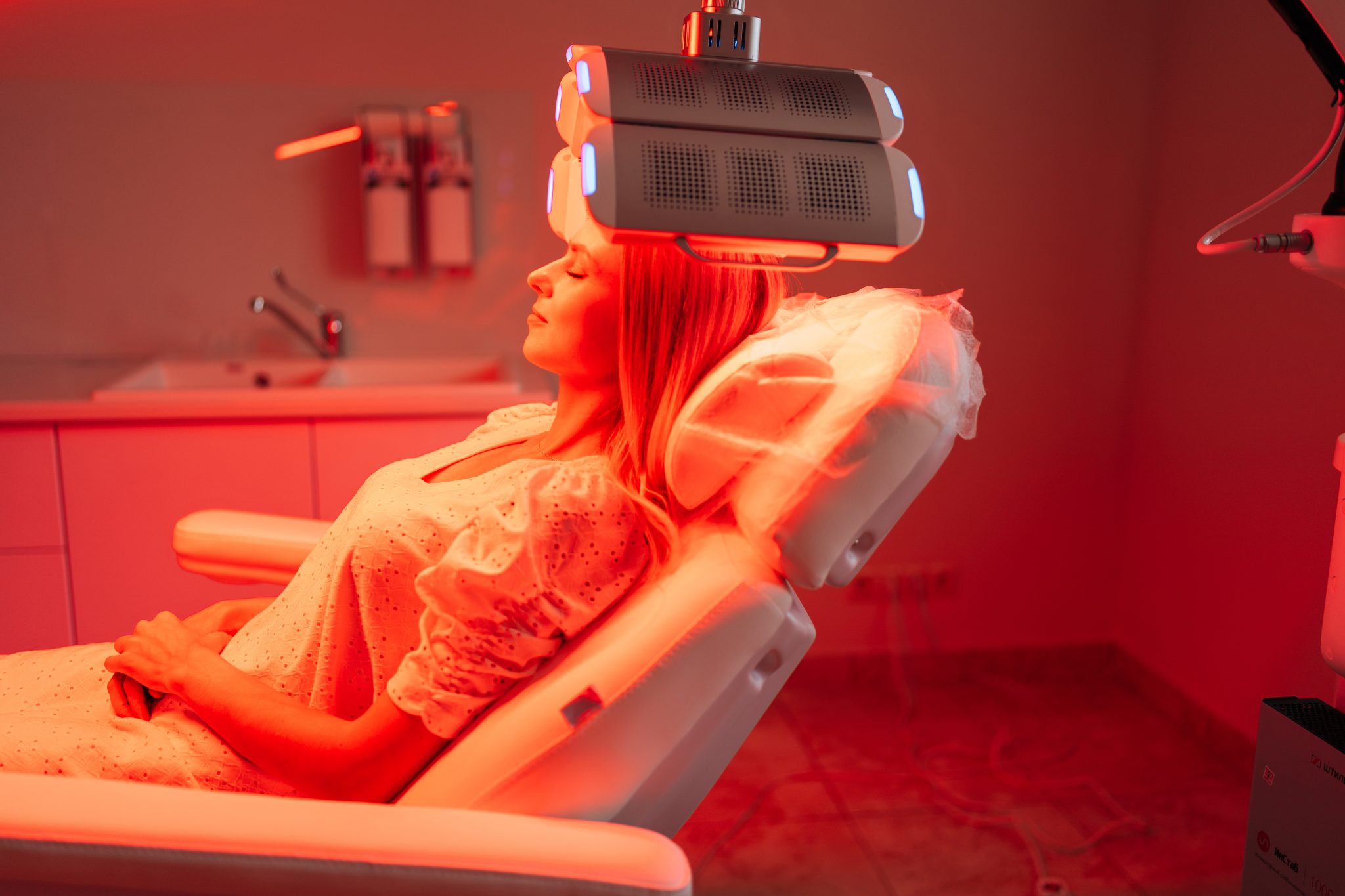By: Haley McRaven, BSN – Explores using red light therapy treatment for hair loss.
Abstract
This paper explores the efficacy, mechanisms, safety, and practical considerations of red light therapy (RLT), also known as low-level laser therapy (LLLT), in treating hair loss—especially androgenetic alopecia. Through systematic review of peer-reviewed clinical trials, meta-analyses, case studies, and expert commentary, we analyze how RLT impacts hair density, thickness, and health. The discussion considers RLT within a broader treatment regimen and applies findings to potential users and clinics in Pasco County, Florida. Limitations, recommendations, and future research directions are addressed.
Introduction
Hair loss affects millions globally and carries psychosocial burdens (Allure, 2024; Byrdie, 2025). Androgenetic alopecia (pattern hair loss) is the most prevalent form in both men and women. Though FDA-approved medications like minoxidil and finasteride are available, treatment response varies and side effects can deter use (Gupta & Daigle, 2014). Red light therapy (RLT) or LLLT has re-emerged as a non-invasive, drug-free alternative promising cellular stimulation, increased blood flow, and reduced inflammation (Byrdie, 2025). The purpose of this review is to critically assess RLT’s scientific validity, real-world application, and applicability to people in Pasco County, Florida.
Mechanisms of Action
RLT employs wavelengths in the 630–950 nm spectrum, targeting cytochrome c oxidase in hair follicle mitochondria to increase ATP production and cell proliferation, while also enhancing microcirculation and mitigating inflammation (Byrdie, 2025; PubMed review, 2016; Lumen blog, 2022). Wavelengths around 655 nm are commonly used in clinical settings (Today’s Geriatric Medicine). The combination of red (600–700 nm) and near-infrared (760–1000+ nm) light may yield synergistic benefits—red for superficial follicle stimulation and NIR for deeper circulation and inflammation reduction (reddit users; MDPI; PubMed).
Clinical Evidence in Androgenetic Alopecia
Randomized Controlled Trials (RCTs)
Meta-analyses and RCTs consistently demonstrate RLT’s effect in increasing hair density and thickness in both sexes with androgenetic alopecia. A 2020 meta-analysis of seven double-blind RCTs showed a standardized mean difference of 1.27 favoring RLT over sham, across devices from combs to helmets (95% CI) Individual trials reported:
- A helmet-based RLT device increased hair count by 35–39% after 16 weeks in men
- Female-specific RCTs reported 37–51% hair density improvements over placebo, sustained up to 24 weeks .
Thus, evidence indicates significant follicular response with consistent use of 2–3 sessions weekly or every other day over 4–6 months (Vogue, 2025; Byrdie, 2025).
Real-World Studies
Large-scale, real-world evidence supports clinical data. A longitudinal study of 1,383 users of the iHelmet device showed moderate-to-significant efficacy in ~80% of mild-to-severe AGA cases after one year or ≥180 sessions. Combined therapies with minoxidil or finasteride did not yield significantly higher efficacy in that cohort—though prior studies report a synergistic effect in controlled settings.
Safety, Risks, and Side Effects
RLT is generally safe, with mild side effects limited to transient scalp warmth, tingling, or occasional headaches (Byrdie, 2025; PubMed 2020). Early shedding—a brief uptick in hair loss—is common during initial follicular turnover (reddit users) . Overuse poses a risk of follicular inflammation, so adherence to device guidelines (typically twice weekly) is essential (Byrdie, 2025) .
Comparisons and Adjunct Treatments
RLT often serves as a complementary tool rather than a standalone solution. Combined use with minoxidil and finasteride enhances outcomes: one controlled trial showed 55% improvement in women and 74% in men at temporal regions when RLT was added to topical and oral treatments (Allure, 2024). PRP, microneedling, and lifestyle interventions further support follicular health, though comparative effectiveness relative to RLT alone requires more research.
Device Types, Wavelengths, and Best Practices
Devices vary in form factor: combs, helmets, and caps. Helmets generally provide more uniform coverage. Optimal wavelengths range from 630 to 670 nm, often combined with near-infrared. Laser diodes penetrate deeper and are deemed more efficacious than LEDs (Vogue, 2025; Wikipedia).
Adherence guidelines: 10–20 minutes per session, 2-3 times weekly for at least 4 months; full results may take 6–12 months (Byrdie, 2025; Clinical reviews).
Conclusion
Red light therapy stands as an effective, safe adjunct therapy for hair loss. With consistent use, many users—both male and female—achieve significant improvements in hair density and thickness. The treatment holds promise for residents in Pasco County seeking non-invasive, long-term solutions, especially when integrated with established medical therapies. However, users should temper expectations, and commit to sustained regimens. Here at Caliper Wellness we offer FDA approved red light therapy devices to treat your whole body including our red light therapy cap by NeuroCare Pro. We are highly trained in red light therapy and can utilize it as a tool in your treatment plan from hair loss to anxiety. Come check us out today to begin your hair restoration journey!
References
Allure. (2024, November 14). I Tried Everything to Treat My Hair Loss. Retrieved from Allure byrdie.comallure.com
Byrdie. (2025, April 12). Shedding Light on Hair Growth: Can Red Light Therapy Really Restore Your Strands? Retrieved from Byrdie byrdie.com
Gupta, A. K., & Daigle, D. (2014). Low-level laser (light) therapy for treatment of androgenetic alopecia and female pattern hair loss: A review. Journal of Dermatological Treatment, 25(2), 123–129. en.wikipedia.org
PubMed. (2020). Examining the Safety and Efficacy of Low-Level Laser Therapy for Male and Female Pattern Hair Loss: A Review of the Literature. Journal of Cutaneous and Aesthetic Surgery. pubmed.ncbi.nlm.nih.gov+1pubmed.ncbi.nlm.nih.gov+1
PubMed. (2019). Light and green LED light therapy clinical trial. International Journal of Trichology. pubmed.ncbi.nlm.nih.gov
PubMed. (2022). Photobiomodulation for hair loss meta-analyses. American Society for Dermatologic Surgery. vogue.com+15pubmed.ncbi.nlm.nih.gov+15pubmed.ncbi.nlm.nih.gov+15
PubMed. (2022). Real-world outcomes with iHelmet in AGA. Lasers in Medical Science. pubmed.ncbi.nlm.nih.gov+4link.springer.com+4pubmed.ncbi.nlm.nih.gov+4
PubMed. (2021). LLLT downregulates scalp inflammation and boosts minoxidil. Lasers in Surgery and Medicine. thelumenhair.com+6pubmed.ncbi.nlm.nih.gov+6pmc.ncbi.nlm.nih.gov+6
PubMed. (2020). FDA-approved home-use LLLT device meta-analysis. pubmed.ncbi.nlm.nih.gov+1todaysgeriatricmedicine.com+1
Today’s Geriatric Medicine. (n.d.). Health outcomes with 655‑nm red light for hair loss. reddit.com+8todaysgeriatricmedicine.com+8thelumenhair.com+8
Vogue. (2025, four weeks ago). A Dermatologist’s Guide to the Best Red-Light Therapy for Hair Growth. reddit.com+8vogue.com+8nypost.com+8
Wikipedia. (2025, last month). Low-level laser therapy. Retrieved from Wikipedia nypost.com+8en.wikipedia.org+8en.wikipedia.org

